Very few countries have played such an important role in the course of art history than France, and that’s definitely not an understatement.
French painters have been pivotal in the development of various art movements, pretty much ever since the Baroque era in the 17th century.
Rococo, Romanticism, and Impressionism are just some of the styles that were initiated by French artists and which were adopted by their colleagues from all around the world.
I have compiled a list of some of the most famous French paintings in history so you can learn just how influential artists from France have been.
1. Liberty Leading the People – Eugène Delacroix
- Date created: 1830
- Dimensions: 260 × 325 centimeters (102.4 × 128 inches)
- Location: Louvre Museum, Paris, France
Liberty Leading the People is a large painting by Eugène Delacroix (1798-1863), the leading Romantic artist of the 19th century. It depicts a topless Marianne, the personification of the French Republic, who is leading her followers during the July Revolution of 1830.
Apart from holding the tricolor, the French flag until today, she also wears a Phrygian cap. This has been the symbol of liberty, something that was achieved with force as she holds a bayonet in her other hand. This work can easily be described as one of the most iconic French paintings ever completed.

2. The Coronation of Napoleon – Jacques-Louis David
- Date created: 1805-1807
- Dimensions: 6.21 × 9.79 meters (20 feet 4 inches × 32 feet 1 inch)
- Location: Louvre Museum, Pairs, France
The Coronation of Napoleon is an enormous painting by Jacques-Louis David (1748-1825), the leading Neoclassical artist of the late 18th and early 19th centuries. David was politically active and first supported the French Revolution and subsequently Napoleon.
He became the personal painter of the French Emperor who crowned himself as such in December 1804. He can be seen holding his crown in the air in the central part of the painting. Even though David was present during this event, he took some liberties and included several people who weren’t there.
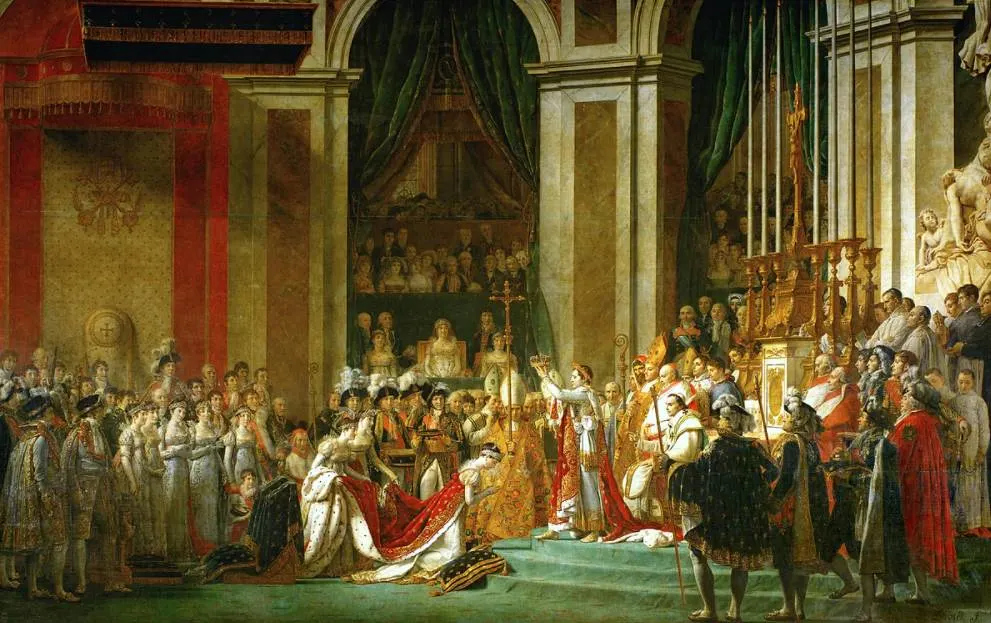
3. The Raft of the Medusa – Thèodore Gèricault
- Date created: 1818-1819
- Dimensions: 490 × 716 centimeters (16 feet 1 inch × 23 feet 6 inches)
- Location: Louvre Museum, Paris, France
The Raft of the Medusa is another huge painting by Thèodore Gèricault (1791-1824), a man who was bound to become the most renowned Romantic artist of the 19th century but who died early. He was a friend of Delacroix and the latter took on the role that was destined for him.

The painting depicts the raft of a French ship named “Méduse” which shipwrecked off the coast of Mauritania. This tragic event happened on April 2, 1816, and cost the lives of 132 people. Only 15 of the 147 people on the raft survived this ordeal.

4. The Swing – Jean-Honoré Fragonard
- Date created: 1767
- Dimensions: 81 × 64.2 centimeters (31.87 × 25.25 inches)
- Location: Wallace Collection, London, United Kingdom
The Swing is the title of the best-known painting by Jean-Honoré Fragonard (1732-1806), one of the leading Rococo artists of the 18th century. It’s the embodiment of the frivolous Rococo movement which was extremely popular at the hedonistic French court at the time.
Even though it’s a relatively small painting compared to the other French paintings on this list, it’s definitely one of the most iconic ones. It’s fairly certain that it was commissioned by someone who worked at the French court, but it remains unknown by who exactly. Today, it’s part of the Wallace Collection in London.
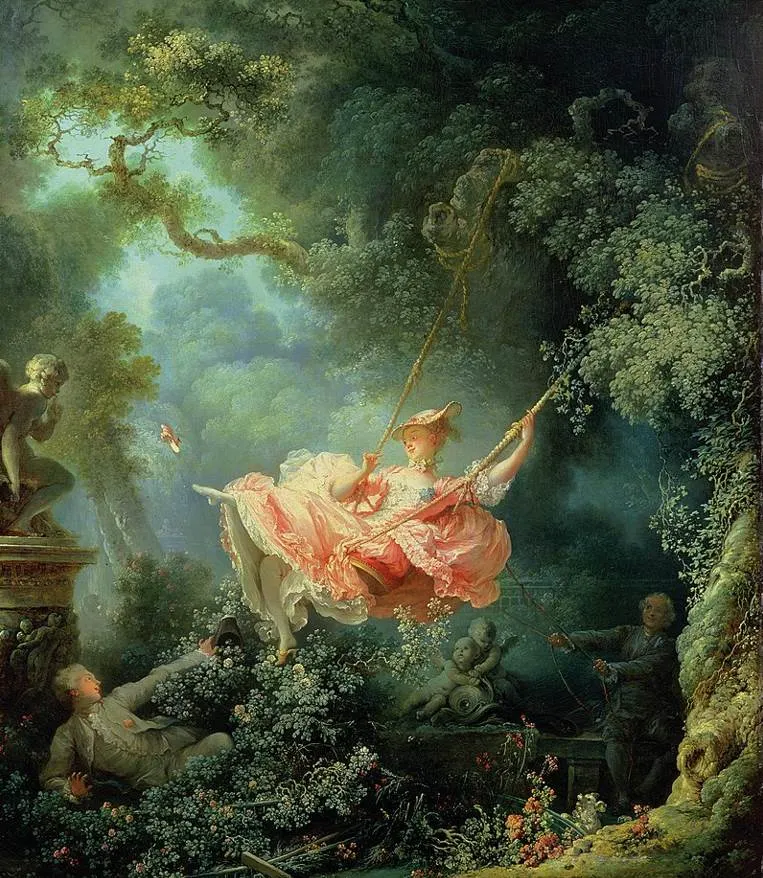
5. The Embarkation for Cythera – Jean-Antoine Watteau
- Date created: 1717
- Dimensions: 120 x 190 centimeters (50.7 x 76.3 inches)
- Location: Louvre Museum, Paris, France
The Embarkation for Cythera is the title of a painting by Jean-Antoine Watteau (1684-1721), another influential French artist who developed a style referred to as “Fête Galante.” This refers to finely dressed men and women who are situated in a parkland setting.
This painting is definitely the epitome of this genre. It’s also this painting that Watteau submitted as his so-called “reception piece” to the Royal Academy of Painting and Sculpture. He already painted an earlier version and completed a later version in 1719 as well.
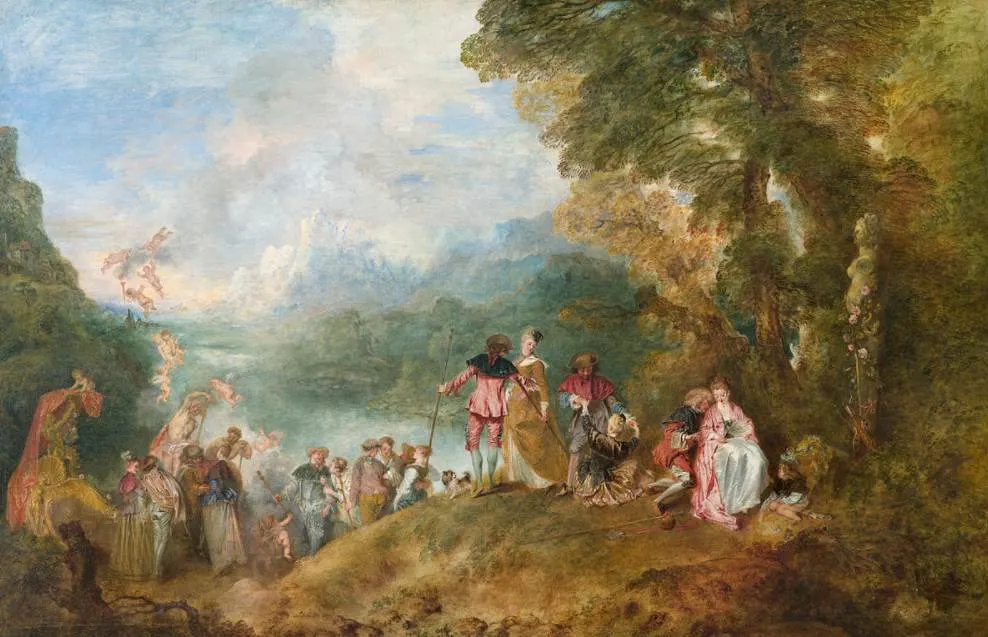
6. A Burial at Ornans – Gustave Courbet
- Date created: 1849-1850
- Dimensions: 315 × 660 centimeters (124 × 260 inches)
- Location: Musée d’Orsay, Paris, France
A Burial at Ornans is the title of one of the most famous paintings by Gustave Courbet (1819-1877), the founding father of the Realism movement of the mid-19th century. It depicts a burial in the artist’s hometown in the east of France which he visited himself.
The painting resembles the famous group portraits that were popular during the Dutch Golden Age and depicts people who were present during this event. It’s a typical Realism painting in which the artist tried to paint the figures as realistically as possible. This made the painting a great success at the Paris Salon in the early 1850s.
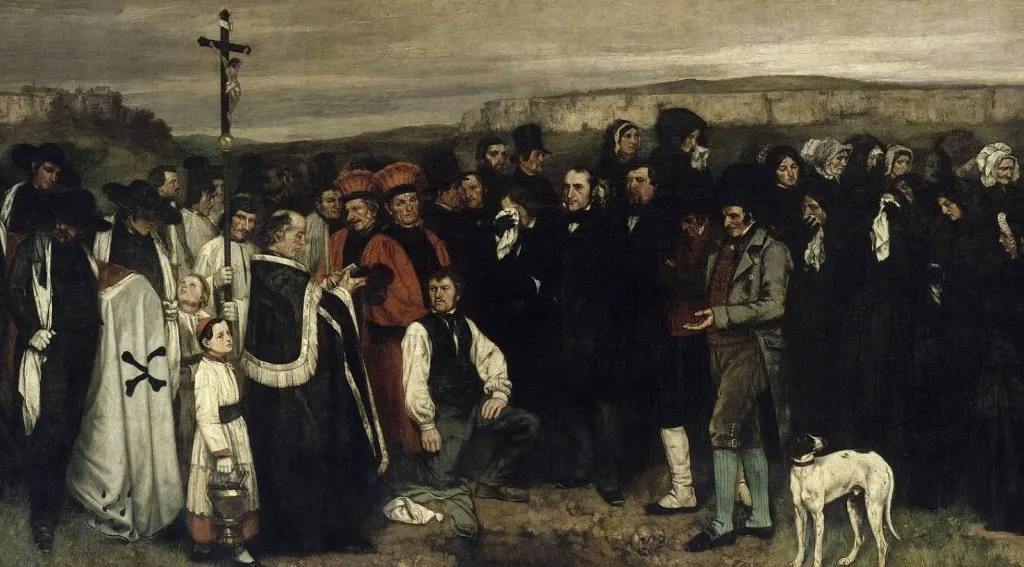
7. Le Déjeuner sur l’Herbe – Édouard Manet
- Date created: 1863
- Dimensions: 208 × 264.5 centimeters (81.9 × 104.1 inches)
- Location: Musée d’Orsay, Paris, France
Le Déjeuner sur l’Herbe is the title of a painting by Édouard Manet (1832-1883), another influential French artist who is sometimes referred to as the founder of modern art. He was important for forming a bridge between Realism and Impressionism.
The painting sent shockwaves through the art community because of the content. The naked woman in a woodland setting who is accompanied by two finely dressed gentlemen stares directly at the viewer. This wasn’t something that contemporary art enthusiasts were used to, that’s for sure.

8. Impression, Sunrise – Claude Monet
- Date created: 1872
- Dimensions: 48 × 63 centimeters (18.9 × 24.8 inches)
- Location: Musée Marmottan Monet, Paris, France
Impression, Sunrise is the title of a painting by Claude Monet (1830-1926) that gave the name to the Impressionist art movement in the early 1870s. It depicts a hazy view of the port of Le Havre, a French port city that was Monet’s hometown.
It’s one of many paintings of Le Havre that Monet completed during a trip to his native city in 1872. The small painting was initially mocked as it was deemed to be incomplete. Monet continued to develop this style and his Impressionist paintings are some of the most famous in the world today.
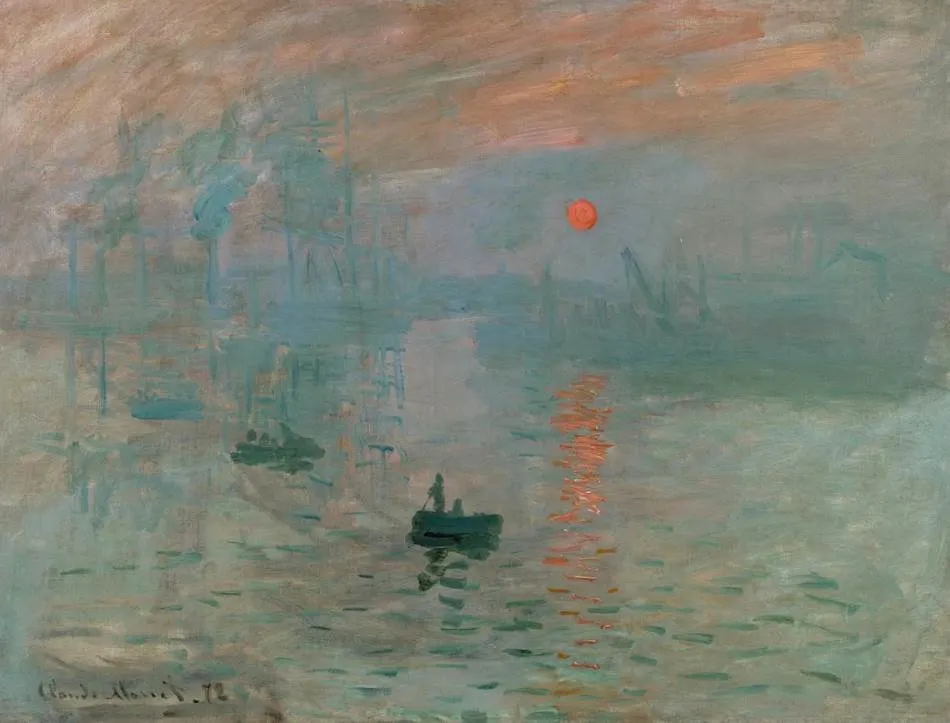
9. Bal du moulin de la Galette – Pierre-Auguste Renoir
- Date created: 1876
- Dimensions: 131 × 175 centimeters (52 × 69 inches)
- Location: Musée d’Orsay, Paris, France
Bal du moulin de la Galette is the title of a painting by Pierre-Auguste Renoir (1841-1919), Monet’s friend and another man who was highly influential in the development of Impressionism during the 1870s. This iconic work of art is the perfect example of this.
It’s one of the many works that Renoir painted outdoors, even though this entertainment venue at Montmartre was quite windy. This place was always bustling with people on Sunday afternoons and the hazy view captures the chaotic atmosphere remarkably well.
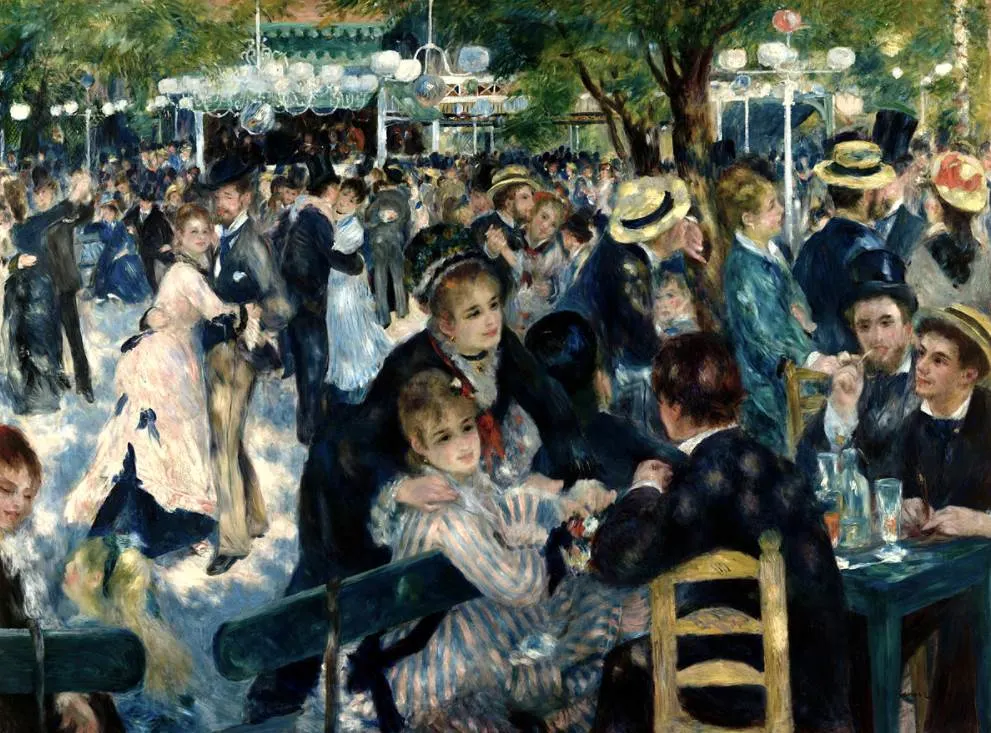
10. Le Bonheur de Vivre – Henri Matisse
- Date created: 1905-1906
- Dimensions: 176.5 × 240.7 centimeters (69.5 × 94.75 inches)
- Location: Barnes Foundation, Philadelphia, United States
Le Bonheur de Vivre is one of the most famous paintings by Henri Matisse (1869-1954), one of the most influential modern artists in history. It’s considered to be one of the most important paintings in the early days of modern art and inspired countless artists of future generations.
The use of colors was typical of the Fauvism paintings that Matisse painted in the early 20th century. It was exhibited at the Salon des Indépendants of 1906 and because of these unnatural colors, was initially heavily criticized. Today, it’s definitely a great addition to this list of the most famous French paintings in history.

